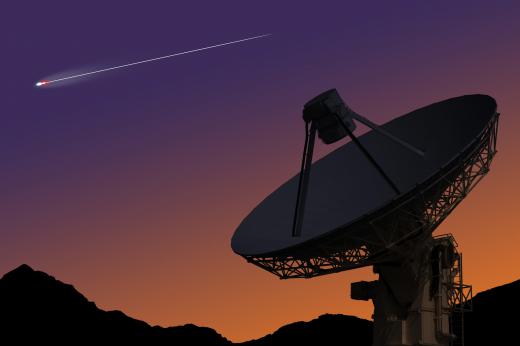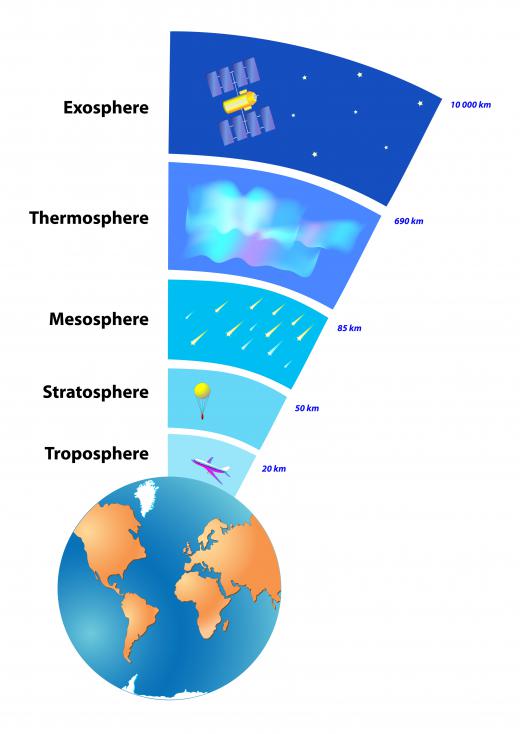What is the Mesosphere?
 Hillary Flynn
Hillary Flynn
Just as the physical body of the earth is comprised of many layers, the earth's atmosphere is also made up of layers. One of these is called the mesosphere. The literal translation is "middle sphere," as it is sandwiched between the major top and bottom layers of the atmosphere. The first layer is the troposphere, the second is the stratosphere, the mesosphere is third, then on top of that is the thermosphere and exosphere. The mesosphere begins approximately 30 miles (48.2 km) above the surface of the earth and extends to approximately 50 miles (80.4 km).
This layer is where most meteors burn up. Though many believe the streaks of light caused by meteors are falling stars, they are actually small pieces of rock or metal that hit earth’s atmosphere at extraordinarily high speeds. The pressure created by this shatters the meteors and causes a transfer of energy from the meteor to the atoms and molecules in the atmosphere. This energy is then released as the “glow” that is mistaken for falling stars.

The top of the mesosphere is the coldest place in the atmosphere, with temperatures falling as low as -225°F (about -143°C). The freezing temperatures cause ice to form on the rock and metal particles in the atmosphere, which can then form what are known as noctilucent clouds. These clouds sit higher than any other clouds in the atmosphere and are only visible when the sun falls below the horizon, and then only near the polar latitudes, during summer months when the mesosphere reaches its coldest temperatures.

Noctilucent clouds have a unique, wave-like appearance, and are illuminated in the evening sky by the sun below. They have only been sighted since the end of the 19th century, but sightings are increasing in frequency and they are thought to be increasing in brightness as well. Scientists believe they may indicate changes in earth’s atmosphere, primarily a change in climate.
AS FEATURED ON:
AS FEATURED ON:












Discussion Comments
@annon147972: What makes it the coldest layer?
@anon147972- The mesopause is actually the coldest part of the earth's atmosphere. This is where the thermosphere meets the mesosphere. The thermosphere is where the atmosphere begins to form. This area is actually very warm because the particles that comprise this part of the atmosphere collect solar radiation. Temperature is a function of density, and the denser thermosphere acts as an insulator.
The heat does not transfer well through the mesopause because air density is low at the top of the mesosphere and increases as you move closer to the atmosphere. The reason for this has to do with ozone production in the mesosphere. The O3 molecules have a much higher atomic weight than the single oxygen atoms.
As ozone forms, it falls towards the stratosphere, creating a void between the ozone layer and the hotter thermosphere. Hot air tends to rise, cold air falls, but density can trump this effect. The mesopause is comprised of air that is two to three times less dense than the rest of the mesosphere, creating a cold zone in the middle atmosphere. I hope I did not confuse you too much.
@OeKc05 - I bet the mesosphere must warm up significantly during meteor showers! All of that friction making the debris burn must really drive the molecules crazy!
@anon147972 - That seems strange, doesn't it? You would think the closer to the sun something is, the warmer it would be.
I cracked out the old geology book to find the answer to this one. The mesosphere is so cold because its molecules are so far apart. The motion and friction of molecules is what produces heat, and since the molecules of this layer are spread so far out, they can't bump into each other very often to create heat.
What makes it the coldest layer.
Post your comments